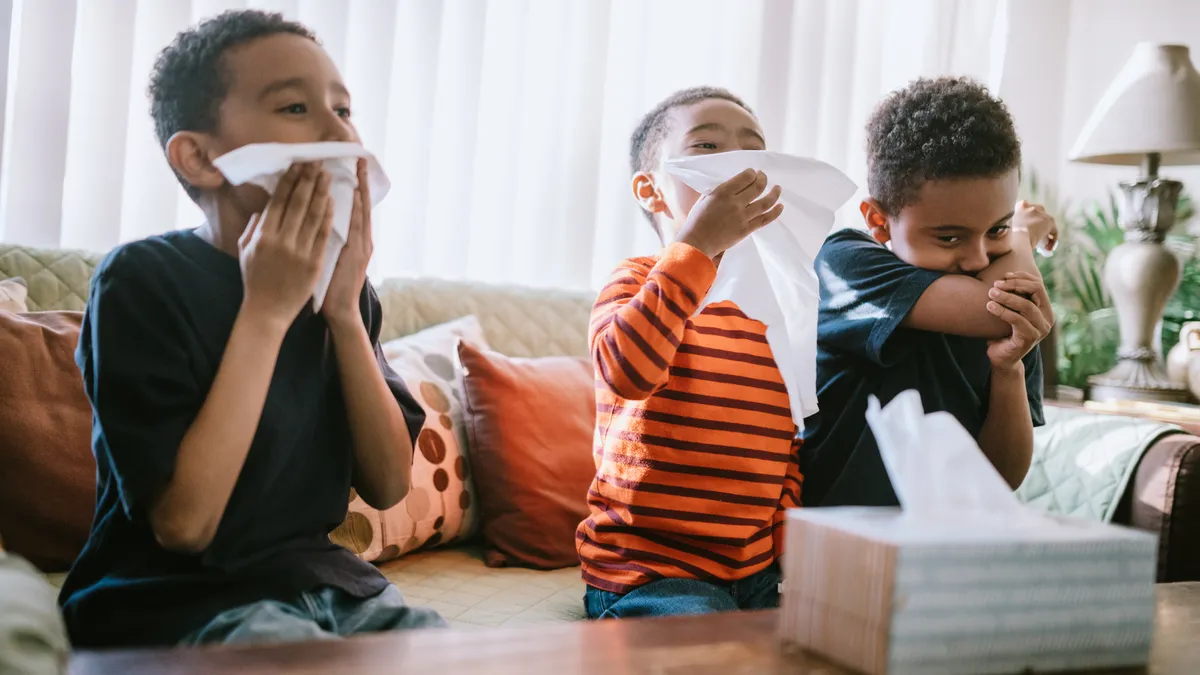Dive Brief:
- After several school years of COVID-19 masking and social distancing, a more normal school year is expected — as is the threat of students and staff catching and spreading more typical illnesses like the flu and common cold.
- Health experts advise schools to be vigilant about everyday preventative measures, such as asking families to keep sick children at home, reminding staff and students to regularly wash their hands, and cleaning and disinfecting surface areas. They also encourage schools to promote vaccinations for the flu and COVID-19, along with the regular pediatric vaccine schedule.
- With the need for learning recovery after several school years disrupted by the pandemic and ongoing staffing shortages, it's critical that schools not let down their guard in preventing the spread of illness even as COVID-19 has lessened its hold on school operations, health advocates said.
Dive Insight:
School nurses are using some of the same COVID-19 mitigation techniques to ward off other illnesses, although masks and on-site COVID-19 testing are less prevalent than in the last few years, according to Linda Mendonca, president of the National Association of School Nurses.
Some symptoms of other illnesses, such as respiratory syncytial virus, can seem similar to COVID-19, so nurses who have over-the-counter COVID-19 test kits can assess students or send test kits home with sick students, Mendonca said.
"School nurses obviously, they do surveillance. They assess. That's what they do even pre-COVID, so that's what they'll continue to do and be on top of whatever may be going around," said Mendonca.
She added that schools appear to have an adequate supply of COVID-19 tests right now. Last fall, that was not the case as schools had difficulty obtaining tests due to high demand and supply chain challenges.
Joseph Mann, a family nurse practitioner and clinician in Maryland who is a global medical science liaison at BD, a medical technology company, said vaccination "remains our No. 1 defense against both COVID and flu."
"The more students and faculty that are fully vaccinated and boosted, the better off schools will be this year for during the fall and winter months," Mann said.
He added that schools should closely monitor COVID-19 case rates and public health data for their communities with assistance from their local health department and other partners, such as local governments and nonprofit organizations.
According to the CDC, flu vaccination rates for children 6 months-17 years for the past two years have dropped from the pre-pandemic 2019-20 flu season.
Regular well-child check-ups and immunizations also fell in the first year of the pandemic, worrying health experts about the overall health of students.
According to the Centers for Medicare and Medicaid Services, childhood health screenings dropped 44% between March and May 2020, compared to the same months in 2019, for beneficiaries of Medicaid and the Children’s Health Insurance Program. CMS data also shows a sharp 69% decline in children’s dental services.
With the return to a more normal school year, districts are enforcing immunization requirements.
Starting Oct. 11, public school pre-K through 5th grade students in the District of Columbia, for example, will not be allowed to attend school if they can't show proof of routine pediatric vaccinations or an upcoming vaccination appointment. Nonvaccinated students in grades 6-12 have until Nov. 4. Students 12 and older must also show proof a COVID-19 vaccine by Jan. 3, 2023, according to an Aug. 26 notice from the mayor's office.








 Dive Awards
Dive Awards






